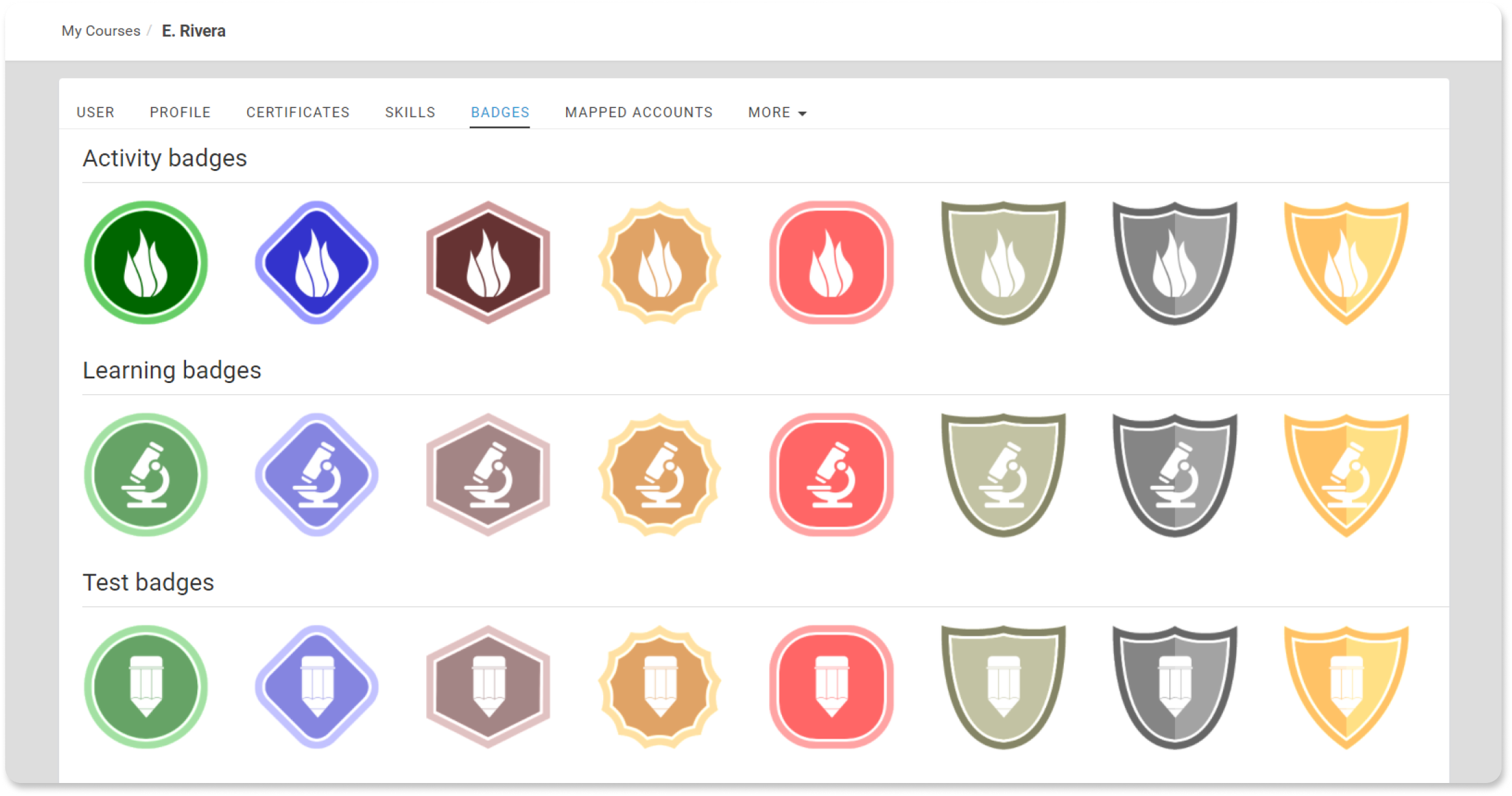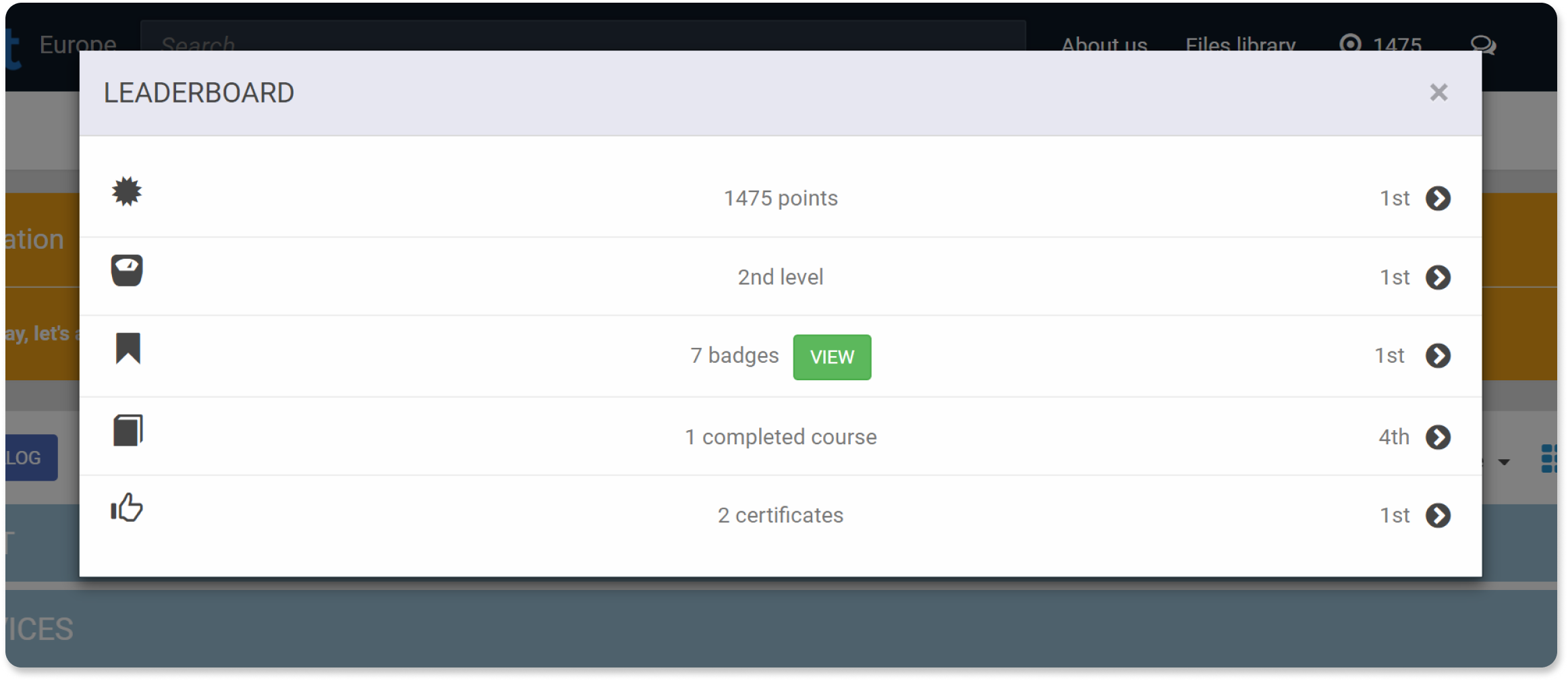There are several techniques that are routinely used to “gamify” a web application or service, and One on One integrates some of the more well-known and battle-tested ones, namely Points, Badges, Levels, Leaderboards. Administrators can set up Gamification settings from the System Settings page.
Points are the equivalent of “keeping score” in a game. You can configure the occasions in which points are awarded (for example, when one completes a course, for each login to the LMS, etc).
Each time a user gets points, he is shown a non-intrusive message (1) along with a visual count-up incrementing his total points in the header. The whole scheme might sound simple, but there’s nothing like a subtle touch of gamification to ignite the competitive spirit in your learners.

Badges are the equivalent of real-world
badges (or “medals”). They are visual stamps (images), that are unlocked on certain achievements, and are displayed in the user’s header and profile info. As with points, when a user gets a badge, a non-intrusive notification is shown.
One on One implements a badging system that makes acquiring badges easy in the early stages (e.g after a few logins, or on course completion), and increasingly difficult as the user progresses (e.g after getting a certificate, after getting a perfect grade on a test, etc).
Our badging system offers badges in a symmetrical and predictable manner.There are 7 categories of badges available, with each category offering 8 levels of badges.
Levels can be thought as a hierarchy that the user can rank higher and higher (like getting a promotion at work or completing a year of school).
By default, all users start on Level 1. Administrators can define in which cases level is moving up. For example every X points, every Y completed courses or every Z badges.
Leaderboards are what you might know from your console gaming years as a “high score” list. Leaderboards offer a visual depiction of the user’s ranking under various metrics (Points,
Badges, Certifications etc) compared to fellow learners. Leaderboards always mention the best in their category, as well as several people near the current user. This way the learner has a grand overview of his position compared to others.
Note: The leaderboard is branch specific, which means that the users that are members of a specific branch can only see users from the same branch in their leaderboard.


